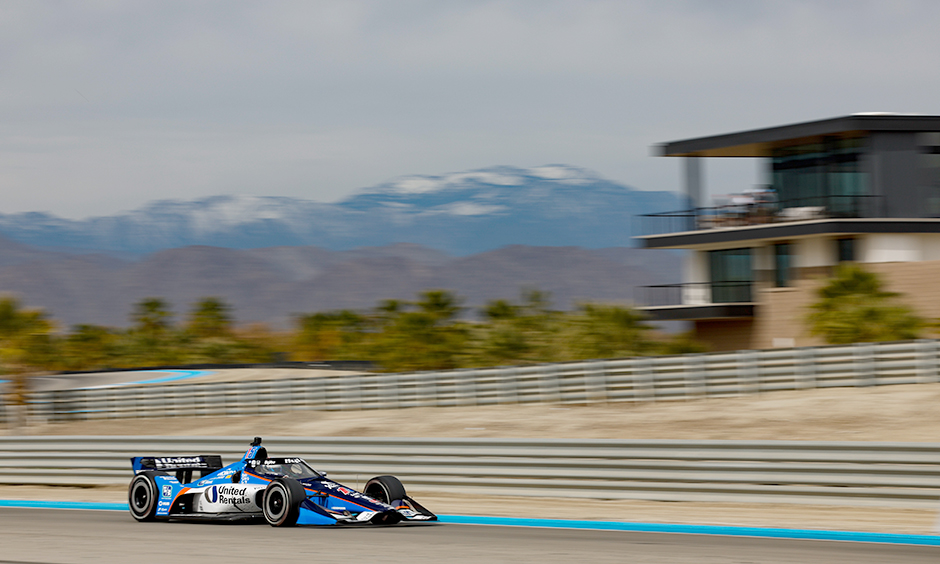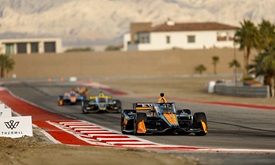Inside Line: What Excites Most about Thermal Special Event?
MAR 20, 2024
Today’s question: What excites you the most about The Thermal Club $1 Million Challenge this weekend?
Curt Cavin: For me, it’s the chance to have more – more racing, more action, more memorable moments. More importantly, don’t overlook what it means for the sport’s ecosystem to have another race on NBC, where the broadest audience reach exists. This will be the second of five NBC races (out of six) through the end of May and one of 10 NBC races in all this season. Everyone benefits from that. Additionally, Sunday’s race, which airs at 12:30 p.m. ET, gets started before much of the NCAA Tournament hits high gear with second-round action, so that offers a bright spot amid a very competitive television day. Add it up: More good reasons to have the event.
Eric Smith: While there’s a plethora of storylines to be excited about, I’m inclined to be most thrilled about the change of routine. As someone who’s normally not fond of change and keeps a regimented schedule, how the race weekend around the 3.067-mile road course near Palm Springs, California, lays out is something I’m most looking forward to. Instead of the customary natural road course schedule of Friday afternoon practice session, Saturday morning practice, Saturday afternoon qualifying, Sunday morning warm-up then Sunday afternoon race, The Thermal Club $1 Million Challenge will look entirely different. Friday will boast five hours of testing (12-2 p.m. ET and 5-8 p.m. ET, Peacock). Saturday will have four more hours of on-track testing (12-2 p.m. ET and 4-6 p.m. ET, Peacock) preceding group qualifying (8 p.m. ET, Peacock). Even qualifying is different. It’ll be one round instead of three with the 27 drivers being separated into two groups. Each group is determined by a random draw which takes place Thursday night. Normally the groups are determined by the overall speed chart following the second practice session. The drivers first, third, fifth and so on will be in one group and second, fourth, sixth, etc. in the other. This time, performance holds no weight in determining which group each driver will land. Fate will. The finishing positions in qualifying will determine the starting lineup for the pair of 10-lap heat races that will take place Sunday (12:30 p.m. ET, Peacock, INDYCAR Radio Network). Whomever among the heat race winners was quickest in qualifying Saturday will start on pole for Sunday’s 20-lap main event that pays a purse of $1.756 million. The other heat race winner will start second. The remaining 10 spots to the main event consist of finishes second through sixth in each heat race. Between that, push to pass being used in qualifying, a 10-minute halftime break at Lap 10 separating the first and second half of the main event and no live pit stops, I’m excited to see how this race weekend transpires and see if any of these changes could work their way into a future weekend schedule.
Paul Kelly: All-out racing with little strategy. I’m a massive MotoGP fan, and one of the reasons is the purity of lights-to-flag racing with no pit stops. The action is all out, all the time, with tire conservation about the only strategic factor in the race, which lasts about 40 minutes. I hope and think that’s what we’ll get with the unique, two-segment 20-lap feature race Sunday at The Thermal Club. Smart tire and fuel strategy, along with quick performance in the pits, is a key component of success for teams in points-paying NTT INDYCAR SERIES races. Long may that continue, as it adds an intriguing strategic element to the sport. But for just one weekend, it will be cool to see 12 of the quickest drivers in the series not have to worry about fuel mileage or tire wear and just let it rip, like a MotoGP race or a USAC Midget feature like the Driven2SaveLives BC39 at Indianapolis Motor Speedway.




















